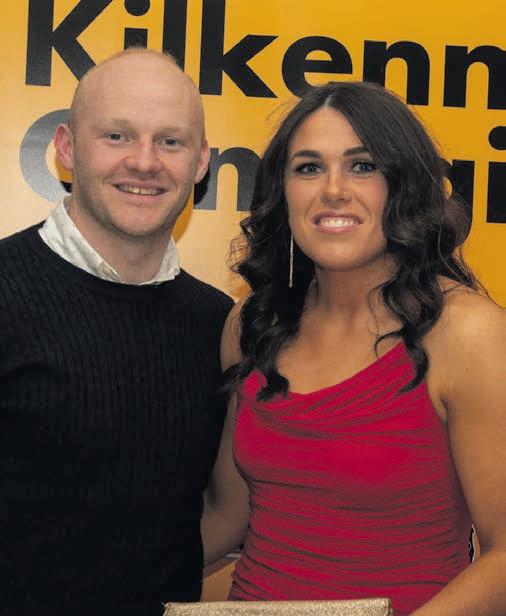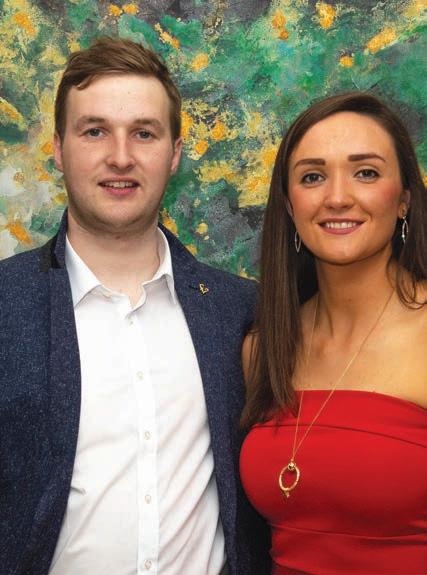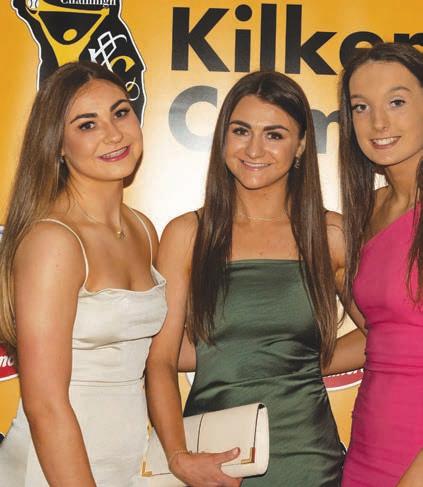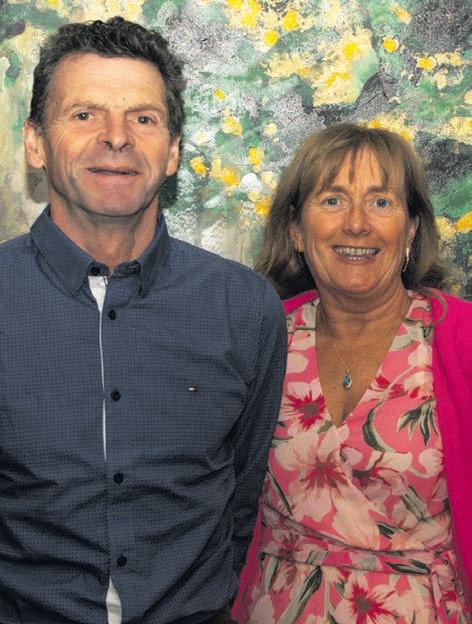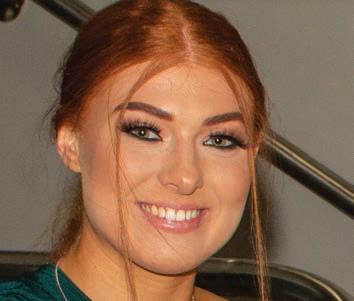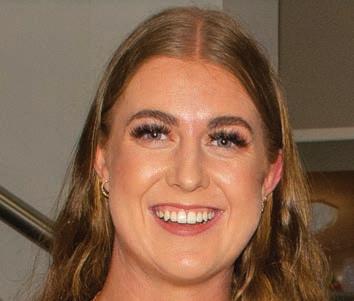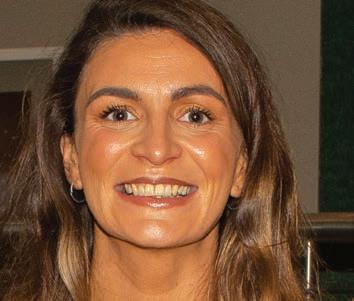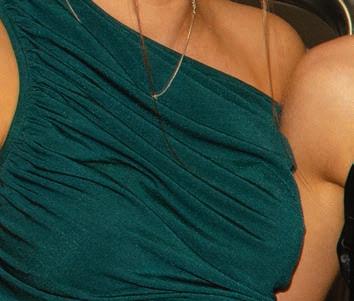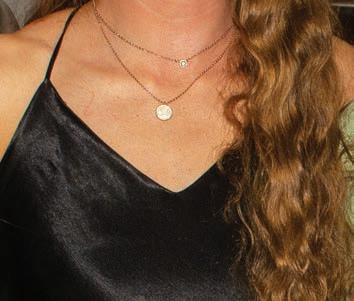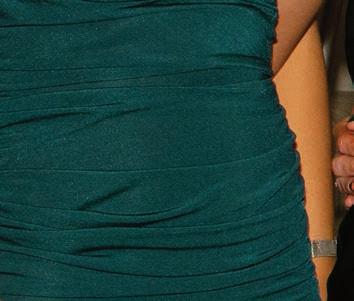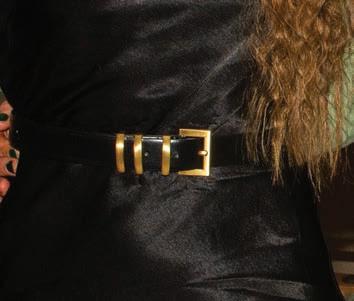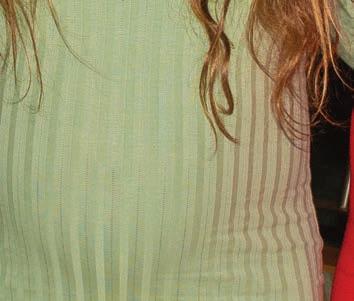
31 minute read
Travel & Leisure
WHILE Italy’s Lake Como is easily accessible by train, after ying into Milan,it’s also less than an hour’s drive from Milan meaning it’s the perfect short road trip destination. With its twisting lakeside lanes, mountains and charming towns, here’s the ultimate guide to driving Lake Como.
Day 1 – Milan to Tremezzina
Advertisement
Setting o from Milan’s Malpensa Airport, it’s a short 40 minute blast up the A9 to the town of Como. For those coming from the heart of Milan, the journey takes a similar amount of time or up to an hour if travelling by train. Serving as the gateway to Lake Como, the city is a good rst stopping point with its bustling shopping streets, beautiful architecture and chic cafe culture.
Historians and shoppers will enjoy the market stalls that line the Medieval city walls at Piazza Vittoria. Everything from crafts to vintage clothing can be found here but watch for the crowds in peak seasons. Venture beyond the city walls and you’ll discover the old town. It’s worth meandering around the shopping streets, through the Piazzas and past the ancient churches (grabbing an espresso on the way, of course) and heading down to the lakefront to get a rst glimpse of the calm and cooling water as it laps along the promenade.
From Como, head down the left-hand side of the lake, which weaves past some of the region’s nest villas and villages. For those in a hurry, take the SS340 – a wide and fast road that caries most of the tra c – while the real gems can be found along Via Regina, a narrow road that hugs the lakeside, o ering spectacular views around every corner of the water and pastel-coloured villas.
Driving on to Lenno, this charming town is in a sheltered bay with restaurants and café bars overlooking the gardens of Villa del Balbianello. Aside from starring as a location in the 2006 James Bond lm Casino Royale, the villa was once home to Italian explorer Count Guido Monzino and is worth a visit as one of the region’s bestpreserved villas.
From Lenno, drive on and wind your way up the hillside directly above the Grand Hotel Tremezzo, branching o the SS340. Not far up the hill, you’ll pull into Al Veluu – one of Como’s best spots for lunch. Take a seat, enjoy the food and, most importantly, indulge in the spectacular views over the lake, Lenno and the surrounding area.
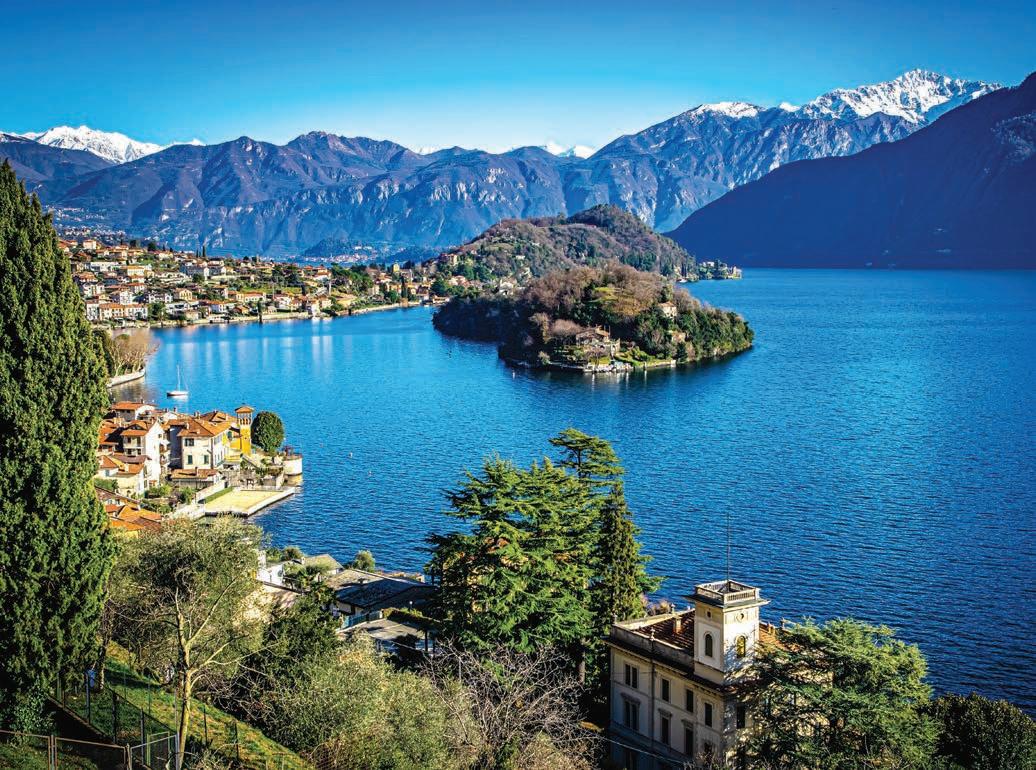
A three-day road trip to Lake Como
Day 2 – Tremezzina to Varenna
Waking up after a night at the Grand Hotel Tremezzo, it’s time to get back on the road and head further north. Keep driving north, hugging the shoreline wherever possible. Past Menaggio, the landscape gets wilder and quieter as you move away from the busier tourist hotspots. Venturing to the far north of the lake, the marshy nature reserve of Pian di Spagna is an excellent place to spot wildlife, get out of the car and explore on foot or take in some of the area’s history. Inhabited since Roman times, the ood plain is beautifully framed by the surrounding mountains and o ers some rugged respite from Como’s more tourist visited areas.
Moving on, the road sweeps around the top of the lake and back down the western side, past Sant’ Agata at the mouth of the river Adda and onto SP72. Once again, the slower route hugs the lakeside and twists its way through the lakeside towns and shing villages. Continuing on the road, head for the colourful commune of Varenna, one of Como’s most authentic and unspoilt towns.
After lunch there , it’s worth taking a stroll around the gardens of Villa Monastero before heading across on the ferry to Bellagio for the evening and a night at Hotel Belvedere. Perched on a hill above the well-known town, while Belvedere doesn’t quite match up to the Tremezzo’s grandeur, it’s an exceptionally well-placed and inviting place to stay.
Day 3 – Bellagio to Milan
It’s di cult to nd a more picturesque place to wake up than Bellagio. At the heart of Lake Como, the charismatic town is a tourist hot spot during the day and, as a result, is awash with restaurants, bars, cafes and – most importantly – gelaterias.
Grab a scoop or two before you hit the road and make tracks back down the eastern side of Lake Como’s west leg towards Milan on SP583. For those looking to take an alternative route back to Milan, branch o down the lake’s eastern leg also on SP583 towards the city of Lecco.
Sticking to the tried and tested track, the road down the eastern side of Como’s western leg winds its way out of Bellagio and through more of Como’s quiet shing villages as it nears Como city.
Stopping for lunch in Torno is a must. Sitting by Torno’s little port sipping an aperitif is like stepping back in time. e bells of the church close by chime as the local restaurants start to wake up and prepare for another lunchtime. Enjoy the gentle pace while walking the narrow, cobbled streets before departing for the comparative hustle and bustle of Como City.
From Como, it’s another short blast back to Milan down the A9 as the lakeside life fades away in the rearview mirror and the pace picks up back in one of Italy’s busiest cities.
1. Madrid, Spain
Madrid has a great acceptance score of 8.81 and has 17 gay clubs and bars (0.3 per 100,000 people). However, it takes a beating in the ratings of these clubs and bars on TripAdvisor with an average of 3.6, the lowest yet.
Spain is one of the most liberal and tolerant nations in the world, so it’s always a good idea to visit the country. For the LGBTQ+ community, there are tons of events and places to feel safe and free (discrimination isn’t cool in Spain) and it’s another world leader when it comes to same-sex laws.

2. Rotterdam, Holland
Another Dutch city high in the ranks is Rotterdam, which has an acceptance rating of 9.8 just like Amsterdam. It’s not ideal that it only has two clubs and bars (0.2 per 100,000 people), but they’ve got an average rating of 5.

Seven cities welcoming of same sex couples
for the LGBTQ+ community. It has a long history of ghting for gay rights and the city has stood like a beacon of hope through the years. Here, you will nd a vibrant LGBTQ+ community that has stood up for its rights and has come to be known as the “gay capital of the world.”.
San Francisco has an acceptance score of 8.21; 1.6 clubs and bars per 100,000 people; and a rating of 4.2 on TripAdvisor. It’s the only American city to be featured in the top 10 of this list.
4. Reykjavik, Iceland
Iceland’s capital soars on every metric on the charts. It scored 10/10 on LGBTQ+ acceptance; it has the most gay-friendly bars and clubs (2.5 per 100,000 people); and many of these establishments have an average score of 4.0 on TripAdvisor, so the quality is top-notch, too. recognise same-sex rights, so it’s natural that its capital would be a role model for the world. It has a 9.8 acceptance score, 1.6 bars per 100,000 people (16 in total), and an average rating of 4.
6. Brussels, Belgium
Belgium is also a forwardthinking, progressive country that recognises gay rights (same-sex marriage and adoptions have been legal for almost two decades. Its capital Brussels takes the sixth spot with an acceptance score of 9 and 14 gay-friendly bars and clubs (0.7 per 100,000 people). However, the ratings aren’t exceptional —t he bars have an average score of 3.9 on TripAdvisor.
7. Cardi
Cardi has four nightclubs and bars that welcome the LGBTQ+ community and an average rating of 4.1 on TripAdvisor. If you’re looking for things to do in Cardi , Visit Wales has recommendations on gayfriendly places, hotels, and events.
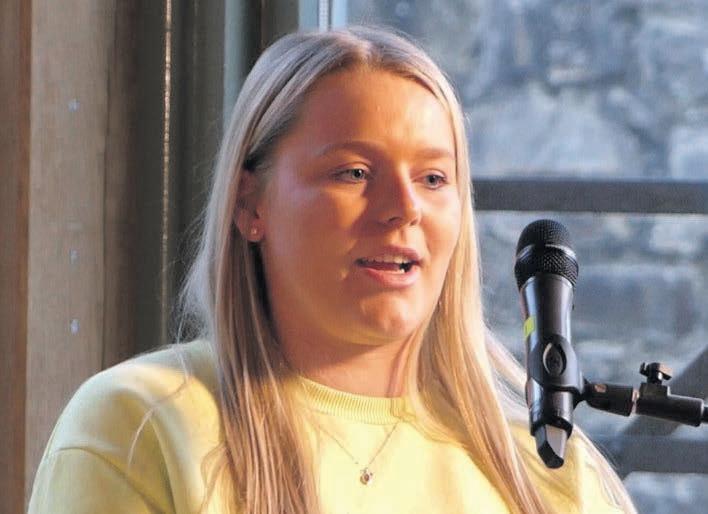
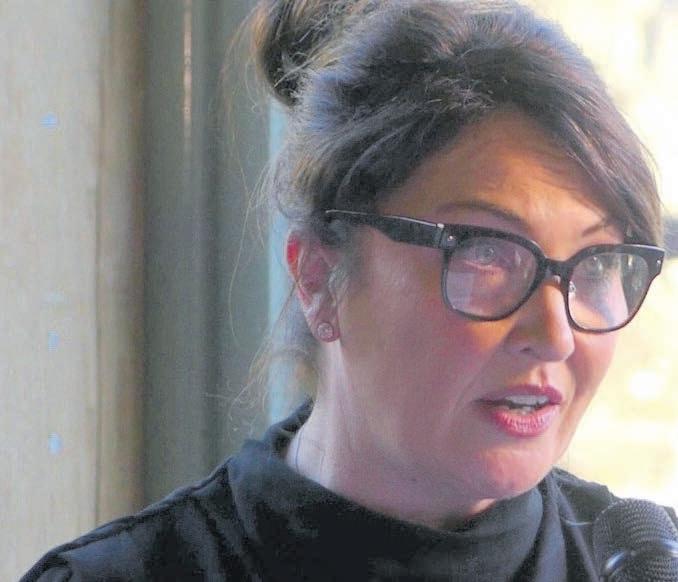
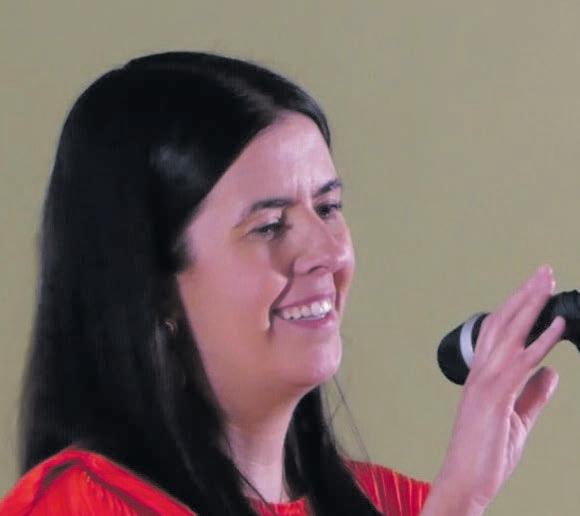
Kathy Purcell from Castlecomer Discovery Park Lauren Mc Cartney, granddaughter of Seamus Walsh recited his poem ‘A Gathering of Miners’ Majella Walsh (daughter of Seamus) who sang Joe Hill in memory of her father





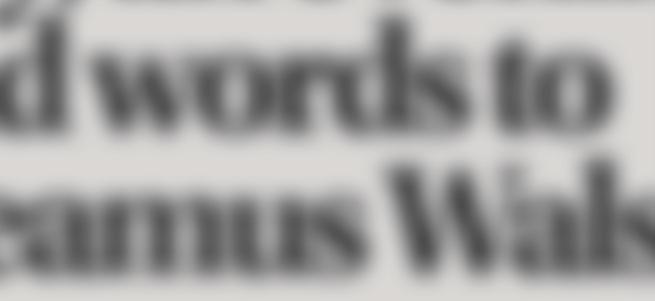

Life & legacy, an evening of music and words to celebrate Seamus Walsh


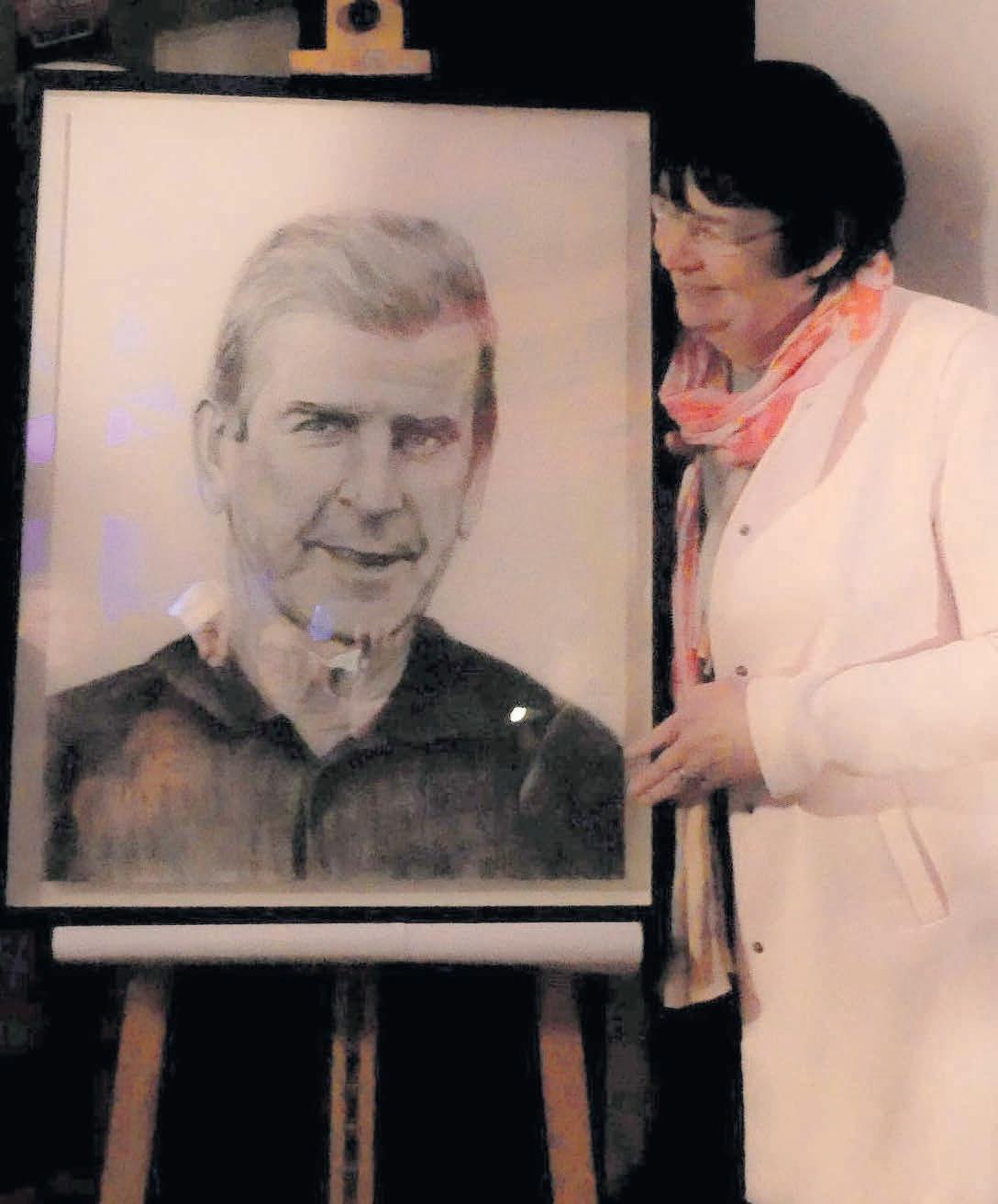

TEXT PETER MARTIN PHOTOS BY MIKE KEALY
ere is something about ‘Comer people.
Maybe it is their determination in what they do.
Nothing is half done. It is a sort of ‘stickability’ they have to stay with a project until it is completed.
Whether it is on a hurling eld, organising the annual wellie race or performing theatre, the men and women from the mining town of Castlecomer have it by the bucket load. And some.
One such ‘Comer man who had all the aforementioned traits was miner, storyteller and author Seamus
Walsh.
Indeed the words of
Nelson Mandella could have been written for
Seamus.
“ ere is no passion to be found playing small—in settling for a life that is less than the one you are capable of living.” ere was no doubting the passion
Seamus had for his family and for friends from the mining community. And the gathering at e Discovery Park recently to mark his anniversary showed the love and esteem in which Seamus was held.
Seamus was a proli c writer, and his books “Coal in the Blood” & “In the Shadow of the Mines” documented rst-hand accounts of life in the mines, and its impact on the wider community both socially and economically. A Poet, Seamus creatively wove words to evocatively convey life as a miner in Castlecomer.
MUSIC, MEMORY AND SONG
e evening was full with music and memory with speakers such as Martin Bridgeman, Maurice Shortall, Michael Conway, Margaret McGrath, Chubby Brennan and Joe O’Neill.
Music was provided by the Male Voice Choir and Breege Phelan.
Also playing on the night was Joe Brennan, Sarah Brennan and Jimmy Byrne.
Singer/song writer Colm Egan played via video link with a song called “ e Deerpark Mines” a song about an ex – miner revisiting the ruins of the mines after its closure. e Walsh family were all present and Seamus’s daughter Majella gave a beautiful acapella rendition of “Joe Hill”.
Many of the family made other contributions such as Seamus’s granddaughter Lauren McCartney who recited a poem that Seamus wrote called “A Gathering of Miners”. Seamus’s Grandson Jamie Walsh also presented a poem that Seamus wrote have to stay with a project called “Lonely Days Past”. e atmosphere was poignant as video from Mike Kealy and photos from John Co ey were interspersed through the evening. Seamus had a life-long passion to honour the men that went down below. Mr Walsh was always focussed on nding alternative energy, and to show the hardships and was miner, storyteller health impacts of mining on those men and boys who worked the pits. Seamus was instrumental in making the coal mining museum a reality.
FREE APP LAUNCHED
In a tting tribute, Kathy Purcell,Manager at the Park, launched the free app “Castlecomer Museum of Mining” which makes the mining history included in the museum accessible to people from all over the world. In creating the mining museum, Seamus didn’t realise that it would also be the catalyst for creating

Worktable and Silence, 1997 Oil on board 48” x 30”, 122 x 76.2cm 1997
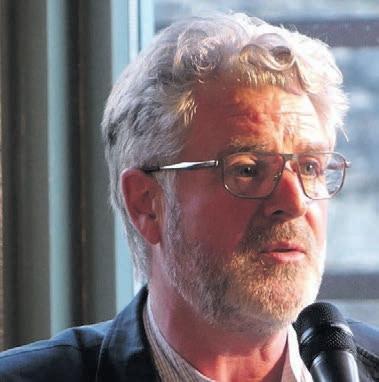
The Walsh family pictured at The Castlecomer Discovery Park
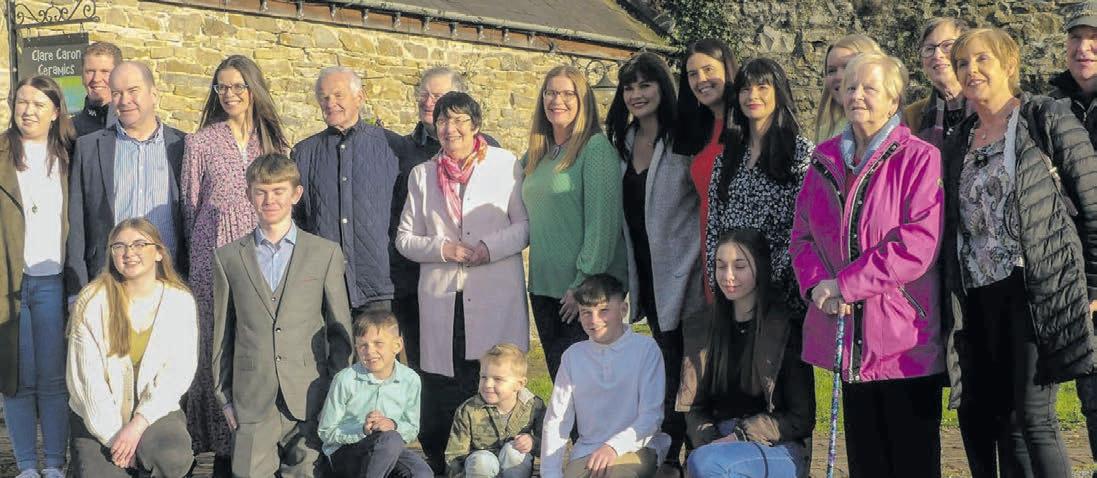
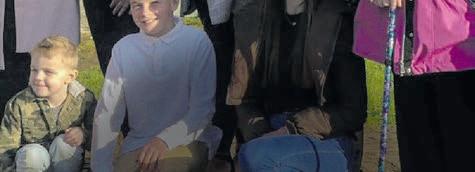
one of Ireland’s best social enterprises, creating jobs and helping to bring some civic pride back to a town that was impacted so much from the closure of the mines.
After two challenging years, the evening was a wonderful night of music, song & readings and a welcome celebration not just for Seamus but for the community he loved so much. Noelle Walsh thanked everyone before Chrissie, Seamus’s wife, was called on to unveil a specially commissioned portrait of Seamus by Castlecomer Craft Yard Artist Niamh Curry.
GAVE FREELY OF HIS TIME
For a number of years, Seamus gave freely of his time to give talks on the life and times of a miner and the mines.
He regularly gave tours of ‘Deerpark’ mine and it was one of the highlights of Heritage week.
Not only did Seamus have the knowledge and love for the topic he spoke about, but his beautiful demeanour made sure that the listener was enthralled by time spent in his company.
In his 1999 book ‘In e Shadow Of e Mines’, there is a wonderful history of the mines and the people who worked them. It also contains some lovely poems about the characters and the hardships that being a miner brought with the job. One such poem, Choices, by Martha Kelly epitomises the life of the miner
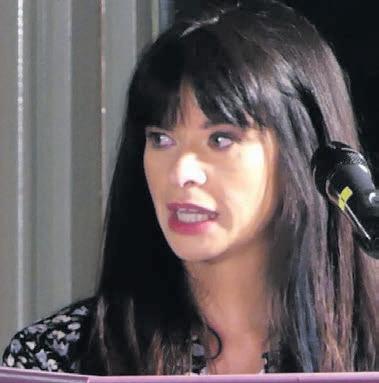
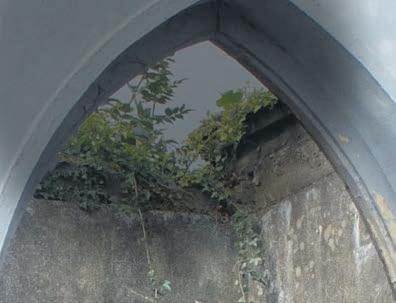
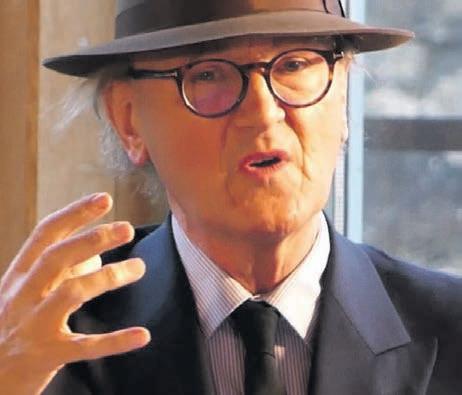
CHOICES
Mining was your lifeline. Even when you saw Your younger brother’s body Broken in a trench You stayed. Even when you saw Two older brothers sail away To streets of gold You stayed. Even when you saw Your best friend Carried from a black hole You stayed. Even when your ve ngers Became three You stayed. You stayed, so that we Would one day have choices.
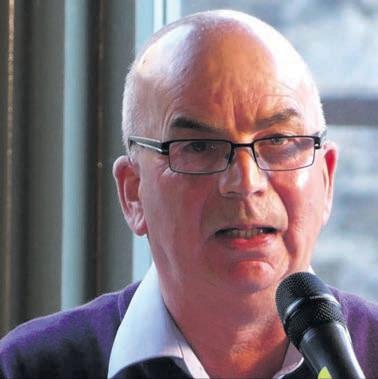
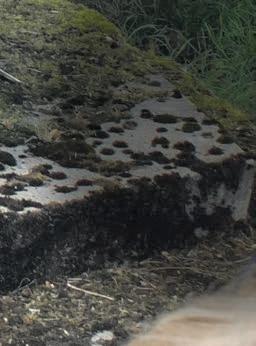

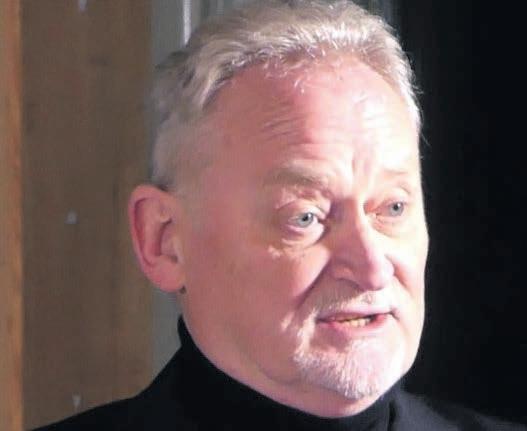
A wonderful evening in A wonderful evening in memory of a great man. memory of a great man.
Take a bow, people of Take a bow, people of ‘Comer ‘Comer
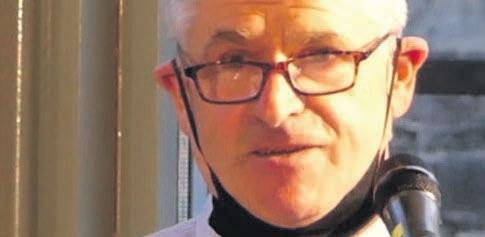
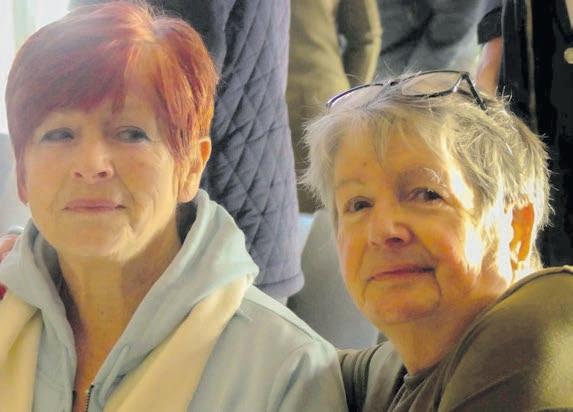
history of the mines and the people who worked some lovely poems about miner brought with the Choices, by Martha Kelly epitomises the life of the
Noelle Walsh, who thanked the attendance on behalf of the Walsh family
Seamus Walsh speaking during Heritage week 2018 at a stopping point on the way to the mines where miners stopped for a prayer each morning. (pic jbs photos)





Josephine Brophy Eileen Byrne and Peggy Power attended the celebrations Martin Bridgeman who attended the tribute to Seamus Walsh
Michael Conway who worked on a number of projects with Seamus Walsh
Gerard Brennan at the Seamus Walsh tribute night
Joe O’Neill, who paid tribute to Seamus Walsh
Maurice Shortall spoke of his many memories of Seamus





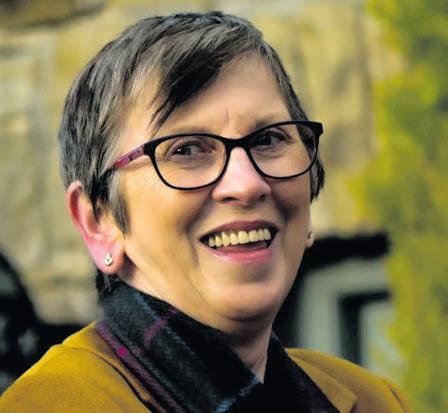
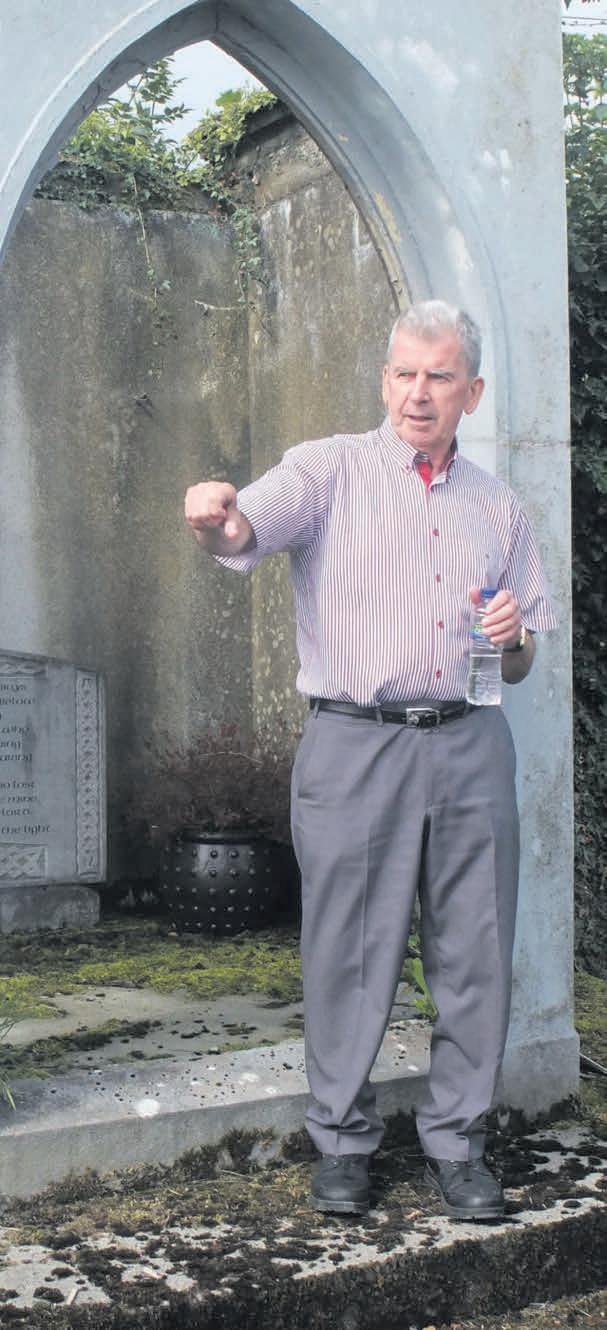
Last year our lowest level of tree planting since 1946!
THE Joint Oireachtas Agriculture Committee has heard that just 2,000ha of new trees were planted in Ireland last year — the lowest level since 1946.
It follows con rmation that just “three or four” recommendations of the MacKinnon Report — a major Department of Agriculturecommissioned review into forestry licensing in Ireland — have been implemented in the last 18 months.
Despite this, and the department’s continued failure to meet its annual 8,000ha planting target, Minister of State Pippa Hackett insists “signi cant progress is being made” and that “consistent negative messaging” is undermining the sector.
Teige Ryan, Chairman of private forestry group SEEFA, told the committee: “ e forest service’s inability to meet Programme for Government a orestation targets over for the last six years has resulted in a failure to plant 21,500ha, which could have removed eight million tonnes of CO2 from our atmosphere.
“A total of 759 a orestation licences remain in the system, with an average of only 12 issued weekly. (60%) of these licences are now with the forest service more than 13 months, and of all licences issued for 2021, only 12% were for tree planting,” Mr Ryan said.
“Forestry nurseries have only survived because increased a orestation levels in Scotland of over 12,000ha presented a lifeline, and an opportunity to export millions of saplings which otherwise would have been destroyed,” he concluded.
PREPARE for a groundbreaking moment in Irish media. South East local radio station Beat 102-103 has launched the limited radio/podcast series Let’s Talk About Gnéas* (*sex). is is the rst ever Irish radio series on sex, featuring real Irish voices talking about real sexual experiences.
Fed up with the ignorance and stigma surrounding sex in Ireland, Beat Presenter Michelle He ernan (pictured) has embarked on a mission to start a real conversation about sex and the Irish, guiding listeners through everything from anal play to BDSM, from oral sex to orgasms, and from kink to consent.
Speaking to men and women in the South East, Michelle attempts to understand where we are really at with sexual relationships and ll in the gaps in our knowledge. Speaking openly and candidly with her peers, Michelle also meets with real Irish sex educators and journalists to facilitate greater understanding on many sexual issues but most importantly of all-consent. Each series combines real testimony with expert knowledge, to provide the kind of guide to sex you needed, but never received in formal education.
Speaking about the series, Michelle said: “For too long, sex in Ireland has come with a warning attached. We have learned so little about this important aspect of our existence, and this ignorance can have devastating consequences-from relationship strife, to physical injury, to sexual assault. It’s time we spoke openly, and positively about sex, to help create the kind of atmosphere that allows intimacy to ourish.”
Speaking on the decision to broadcast the series, CEO of Beat 102-103 Gabrielle Cummins said:
“When Michelle approached me about this idea, I didn’t hesitate to con rm Beat would broadcast the series and I was delighted that the BAI came on board too. Sex education in schools has come on a lot but is still hugely limited. is series targets anyone aged 17 and beyond. ose who listen will come away with a greater understanding around important topics like consent. I’m con dent listeners will also feel more comfortable about exploring their own bodies’ capabilities before progressing to a healthy sexual relationship with someone else.
Let’s Talk About Gnéas also includes Irish language content from bilingual broadcaster Michelle He ernan. e series not only aims to improve sex education, but to link Irish language to something real and entertaining for listeners and help them to revive the Gaeilge within them.
Let’s Talk About Gnéas is a seven-part series funded by Beat 102103 and the Broadcasting Authority of Ireland. It will air every ursday up to June 2.
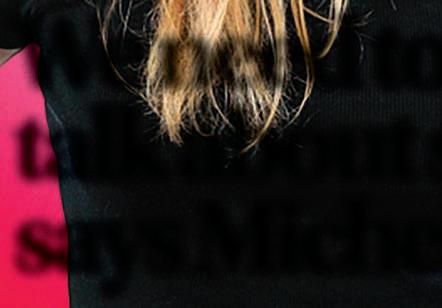
We need to talk about sex, says Michelle
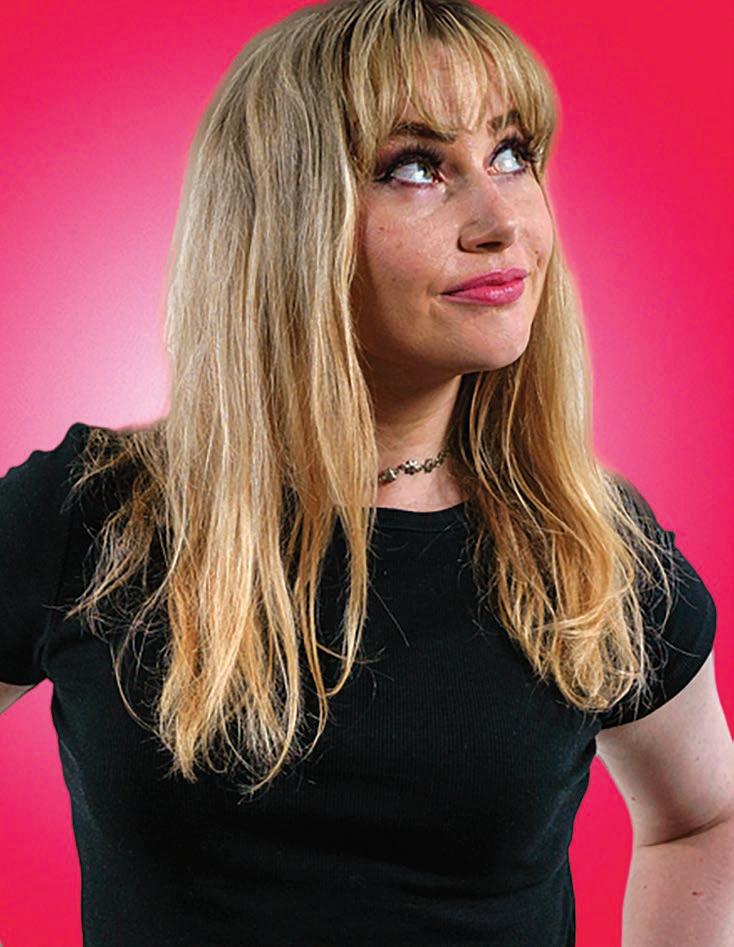
A new book charts untold story of our Thomas Butler
A NEW book on omas Butler, Earl of Ossory [1634-80]. Has just been published by Four Courts Press.
It is a wonderful new work that charts the untold story of an adventurous life lived at the heart of some of the most exciting but perilous moments in Irish, British and European history.
Butler was an extraordinary gure who was hugely popular and he counted contemporaries such as Prince William of Orange, Lord Arlington and the diarist John Evelyn amongst his closest friends. e author, Daniel D. Jordan, had done a wonderful job on this book and it is an excellent addition to the history and heritage of Kilkenny City and County. omas Butler was a widely recognised hero of his time and his life story directly re ects the turbulent nature of 17th century British and Irish politics. Heir to the rst Duke of Ormond, Ireland’s premier nobleman, Ossory aggressively defended his father’s interests at Whitehall and Westminster and twice deputised for him as Governor of Ireland.
Ossory’s European-wide reputation was based on his military exploits at sea during the Anglo-Dutch wars and ghting against the armies of Louis XIV on the continent. He was a popular gure who counted contemporaries such as Prince William of Orange, Lord Arlington and the diarist John Evelyn among his closest friends. is book charts the untold story of an adventurous life lived at the heart of some of the most exciting but perilous moments in Irish, British and European history.
Having studied in Dublin, Vienna and Oxford, Daniel D. Jordan received his PhD from University College, Dublin in 2011. In 2020 he was appointed as the inaugural Butler Society Scholar. He continues to live and work in Oxford where he teaches and lectures on various aspects of British and European History.
* See https://www.fourcourtspress.ie/books/2022/ thomas-butler-earl-of-ossory-1634-80/
Rally day for family carers
Family Carers Ireland Carlow/Kilkenny are having our rst fundraiser for 2022 in Castleinch Venue as part of the rst Castleinch Vintage Rally. A donation will be made to Family Carers Ireland on the day and there will be a number of ra es with some fantastic prizes to help us raise funds so Family Carers can continue to provide our free supports and services in the area. e event will take place on May 2 from 10am and entry is €5 per adult with children under 16 free and will include free face painting and bouncy castles.
IRELAND South MEP Deirdre Clune is backing plans to cut the gender pay gap across the EU.
Working women in member states earn on average 13% less than men when doing the same job.
To address this the European Parliament has voted for strong measures to combat pay secrecy.
MEP Clune told e Kilkenny Observer: “Wage transparency is considered one of the best tools to close the gender pay gap.
“Public sector pay in most EU countries is determined by transparent wage grids that apply to men and women equally.
“ is is not the case for many other workers, with Eurostat data showing the gender pay gap is highest in the private sector,” she said. e European Parliament wants to reduce the number of workers a company employs to be required to publish its pay gap.
MEPs have adopted a position that proposes companies with more than 50 employees should have to disclose information that makes it easier to compare salaries.
“ ere is an option to lower the number in the coming years, but this proposal would cover around 60% of workers across the EU,” said Ms Clune.
“Contract terms that stop workers disclosing or seeking information about wages and salaries should also be forbidden, to prohibit pay secrecy.” THIS year a special procession wound its way through Kilkenny City for Easter - the annual Good Friday walk, which this year was held in solidarity with the people of Ukraine.
Members of the Ukrainian Community in Kilkenny helped lead the walk for peace, healing, and safety for all affected by the war.
A relic of the True Cross was carried in procession for a
Clune backs plans to cut gender pay gap Ukrainians join in City’s Good Friday walk service of blessing and prayer around the Cross-in the Friary Church. It was the third time the relic was used on Good Friday. e relic of the true cross is one of a kind in the world and has the original and of cial seal of authenticity and approval by the Vatican. is year was the 20th year of the walk, which left from St John’s Church, moved down John Street and up High Street.

Today , in the Kilkenny Observer we take a look at the proceedings at Kilkenny Military Barracks when e Blessings of the Colours took place. We thank Cois Céim and e Saturday walkers group for their research to produce this account.

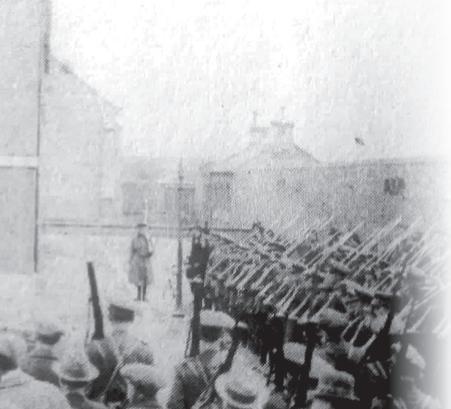
Main image: The Irish flag which was embroidered with the names of the soldiers of the Dublin Guard who died in service during The war of Independence Right: Church and state gather at Kilkenny Military Barracks in 1922 for the blessing of the colours Below right: A er the Republican flag had been hoisted. April 23 1922
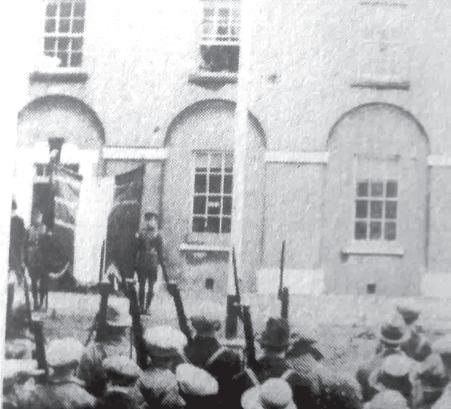
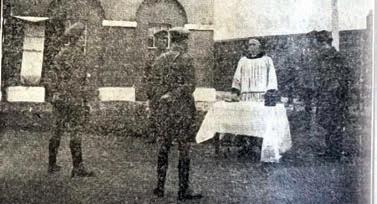
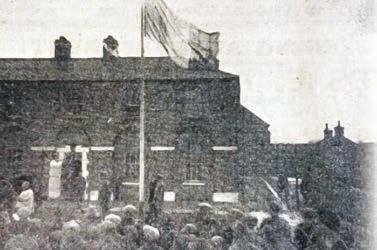
Colours are blessed and hoisted with pride
Kilkenny Military Barracks April 23rd 1922
In the presence of a very large attendance of citizens and people from the county, the troops of the Irish Republican Army, Military Barrack, Kilkenny under the command of Col. Comdt. J.T.Prout,O,C, paraded in the barrack square on Sunday afternoon, when the interesting and impressive ceremony of the blessing of the colours was performed by the Archdeacon Doyle of St. Canices parish. e Arcdeacon was accompanied by several of the city priests. When the colours had been blessed, they were hoisted on the ag sta by Commadant Daly of the Guards Brigade, Dublin, and the Mayor Alderman Peter DeLoughry as the elected head of the civic authorities in Kilkenny at the request of Commandant Prout.
FLAG IS CHEERED ENTHUSIASTIACLLY
e sight of the Republican ag uttering in the breeze in the centre of what was once the stronghold of the enemy in this city was enthusiastically cheered by those present.
Special signi cance was attached to the ceremony by the association of the Mayor with the event as it evidenced the desire on the part of the military authorities to recognise and associate themselves with the civic power. e ceremony of blessing the colours was watched with the greatest of interest.
Commandant Prout, kneeling, received the ag from Archdeacon Doyle who then blessed it. e Commandant then attached the ag to the lanyards and invited Commandant Daly and the Mayor to hoist it. e troops came to attention and presented arms as the ag was being hoisted and the war piper’s band played a suitable air.
Added interest was lent to the occasion by the fact that a beautiful tri colour banner which was also blessed by the Archdeacon, and was presented by the Kilkenny garrison to the Dublin Brigade of Guards.
Commandant Daly received it on behalf of the Guards. e banner, 6 feet wide and 7 ½ deep, was mounted on two ash ag sta s each 9 feet in length.
It is most artistically worked and is highly creditable to the rm of Messrs James Bourke and Sons, High Street, Kilkenny, by whom it was manufactured.
It is of Irish poplin and on it are inscribed the names hand worked in silk in Irish characters of nine members of the Guards Brigade who gave their lives for Ireland during the war for freedom. e Republican ag now oating over the Military barracks was also produced by Messrs Bourke and Sons. e military Mass at 11 0’clock at St Johns Church was served by two o cers, the celebrant being the Rev. Father Staunton and during the Mass in accordance with military custom the drum and bugle took the place of the gong.
FLAG WILL BE AN INSPIRATION
Comdt. Prout at the conclusion of the religious ceremony thanked the Archdeacon for coming to bless their ag, and hoped it would be an inspiration to their soldiers to carry on the ght for Ireland in the future. Irrespective of what people may say to the contrary, Comdt Prout stated the Irish Republican Army would continue as the Irish Republican Army until they attained the objective at which they aimed, namely the Republic of Ireland. Archdeacon Doyle in his address said it was his duty to thank the military authorities for inviting him to bless the ag. e following are the words spoken on the day by the Archdeacon:
“During the horrible contest which the Irish nation had carried on with England for over 700 hundred years, Faith and Fatherland have ever been rmly and fondly united and the ceremony of today is proof on your part that you are determined to foster in your ranks the spirit which inspired and conserved that union.
When I look around at the inspiring sight before my eyes, this splendid body of Irish soldiers in their National uniforms, I nd England cleared out bag and baggage, the army of occupation gone, the police gone, the strongholds of foreign domination manned by Irish soldiers. I nd it hard to believe that all this is real, not a dream. I remember one day when I was about seven years old, standing at my Fathers door, when a baili from Kilkenny came up and ordered him to vote at the coming election for Agar Ellis, the landlord’s nominee. e signi cance of that command was well understood because some years before my Father had been evicted from his farm for daring to exercise the franchise according to his conscience.
Well when the next election comes we won’t have fellows like that going around. I congratulate the o cers and men of this garrison upon the excellent spirit which has prevailed amongst them.
God bless the ag which has been hoisted, may it long continue to be the proud standard of a loyal, devoted, brave Irish army.
May it long continue to oat over and protect a happy, contented prosperous people.”
AN HISTORIC DAY FOR IRELAND
Father Cavanagh then addressed the gathering and remarked this celebration marks an important event in the history of our country.
It meant that England’s ag which has own over Ireland for 700 years has gone down in dishonour and our own ag proudly takes its place.
I congratulate Comdts. Prout, and O’Dwyer, their fellow o cers and men. ey have fought the good ght and kept their faith to God and Ireland. I congratulate them on the order and discipline in the barracks, and now I earnestly request them to hear the words of advice given by Archdeacon Doyle.
You are set apart to defend your country and to guard the lives and liberties of her sons and daughters.
May God keep you united, may God bless Irelands Flag and grant it may never be dishonoured by any of Irelands sons or daughters.
Comdt. Daly returning thanked, on behalf of the Dublin Brigade of Guards, for the beautiful banner presented to them by the Kilkenny Garrison. He added the names of the men inscribed on the banner were the names of men belonging to the Guards who had died for Ireland. e speaker then called the names of the nine men, Martin Savage, Sean Doyle, Frank Flood, Sean Treacy, Patrick Doyle, omas O’Brien, Bernard Ryan, Patrick Magee, and Augustine Murphy. Continuing Comdt. O’Daly said; “some of our own people are trying to uphold British rule by putting up on premises anti Republican slogans with the paint brush and the stencil. e Union Jack had disappeared from this country. If you want to do anything for the Republic, it is not a paint brush you need but a ri e and a stout Irish heart.” He remembered with pride Easter week when they had 100 members of Cumann na mBan with them. He owed his life to one of their number for their skill and devotion. e Mayor said he was very grateful to Comdt. Prout and his fellow o cers for inviting him to such a wonderful ceremony. Archdeacon Doyle had dealt with the glorious event in a way that he would have done if he was able. In asking him to be present he knew the intentions of Comdt. Prout were to honour the citizens of Kilkenny through him.
He assured the o cers and men of all ranks that the citizens of Kilkenny looked on them not only as friends but as their guardians and protectors.
He knew that many of the men in that garrison had been through the thick of the war for Irish freedom. e ght they had made had resulted in driving the foreign garrison bag and baggage out of the country. e ag that had been hoisted that day was the emblem of the ideal that they were all looking forward to. ey may not have got everything at present but they hoped to ght on until their full ideal was achieved.
A FINAL WORD OF THANKS
In conclusion he again thanked the o cers and men of the garrison for so thoughtfully associating the civic authorities in Kilkenny with that glorious function.
Comdt. O’Dwyer said it had been his proud privilege to have taken over the military barracks from the retiring enemy. On that occasion they would have hoisted the Republican ag but that the enemy had taken good care to remove the agsta . However better late than never the Republican ag was now ying where the ag of England had previously oated. Continuing, the Comdt. said they were not Free Staters but soldiers of the Republic. It was the duty of the Army to support the people of Ireland. If he left the Army he was at liberty to become a politician but in every civilised country the Army kept free of politics. e proceedings then concluded.
With thanks to Cois Céim, Kilkenny Saturday walkers group, Pat Shortall, Rothe House, Colin Kilkenny. Material from e Kilkenny People, April 29, 1922
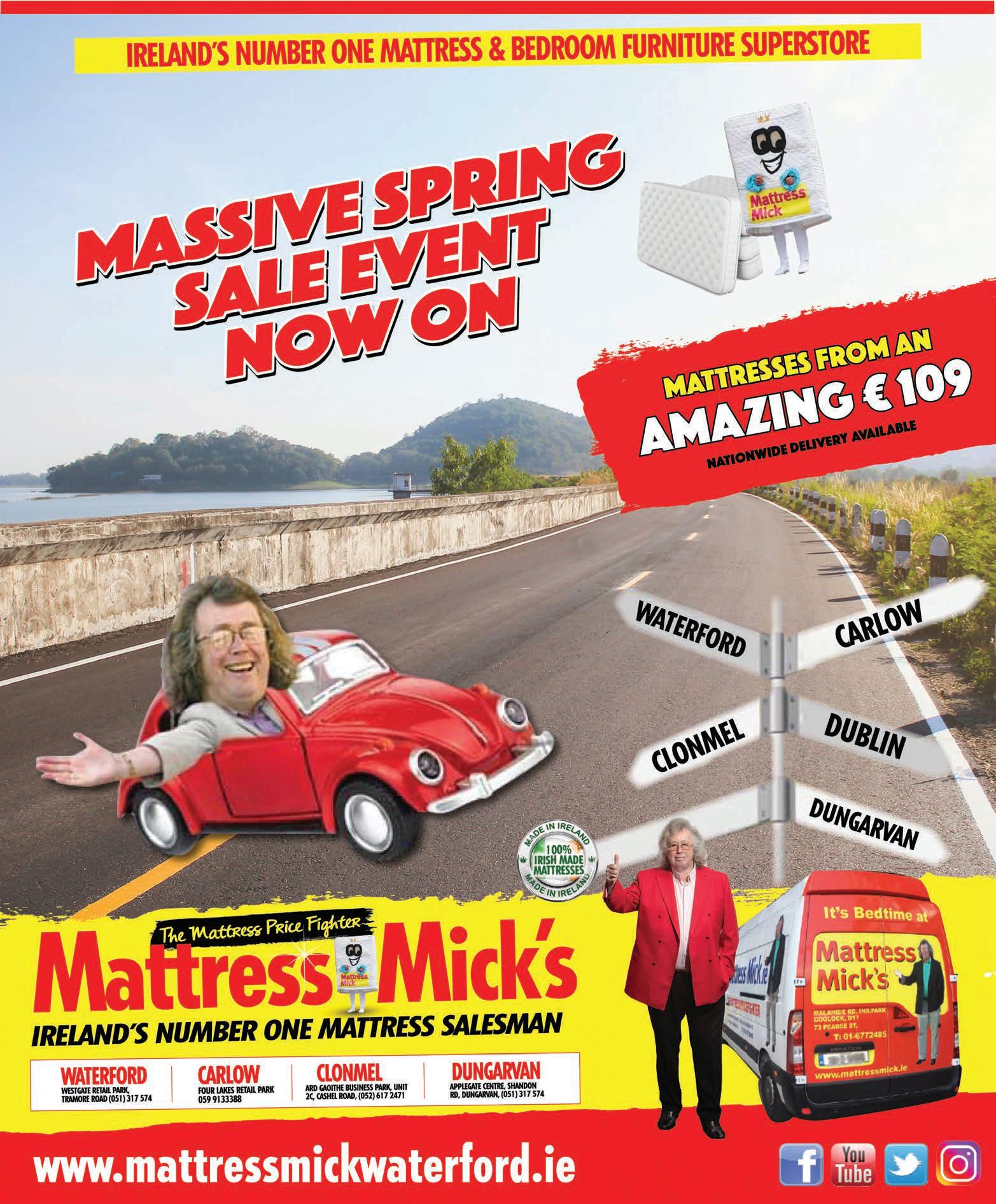
Anne and John Foley





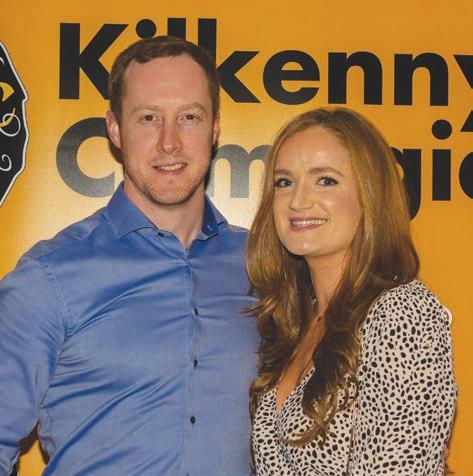
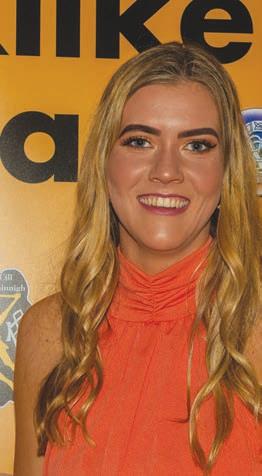
Ti aney Fitzgerald, Ciara O’Keefe’ Ste i Fitzgerald Noreen O’Keefe, Robbie Fitzgerald
Aoife Prendergast
Martin and Helen Farrell
Miriam Walsh and Noel Mcgree
About WITH Danny Lahart Out &

